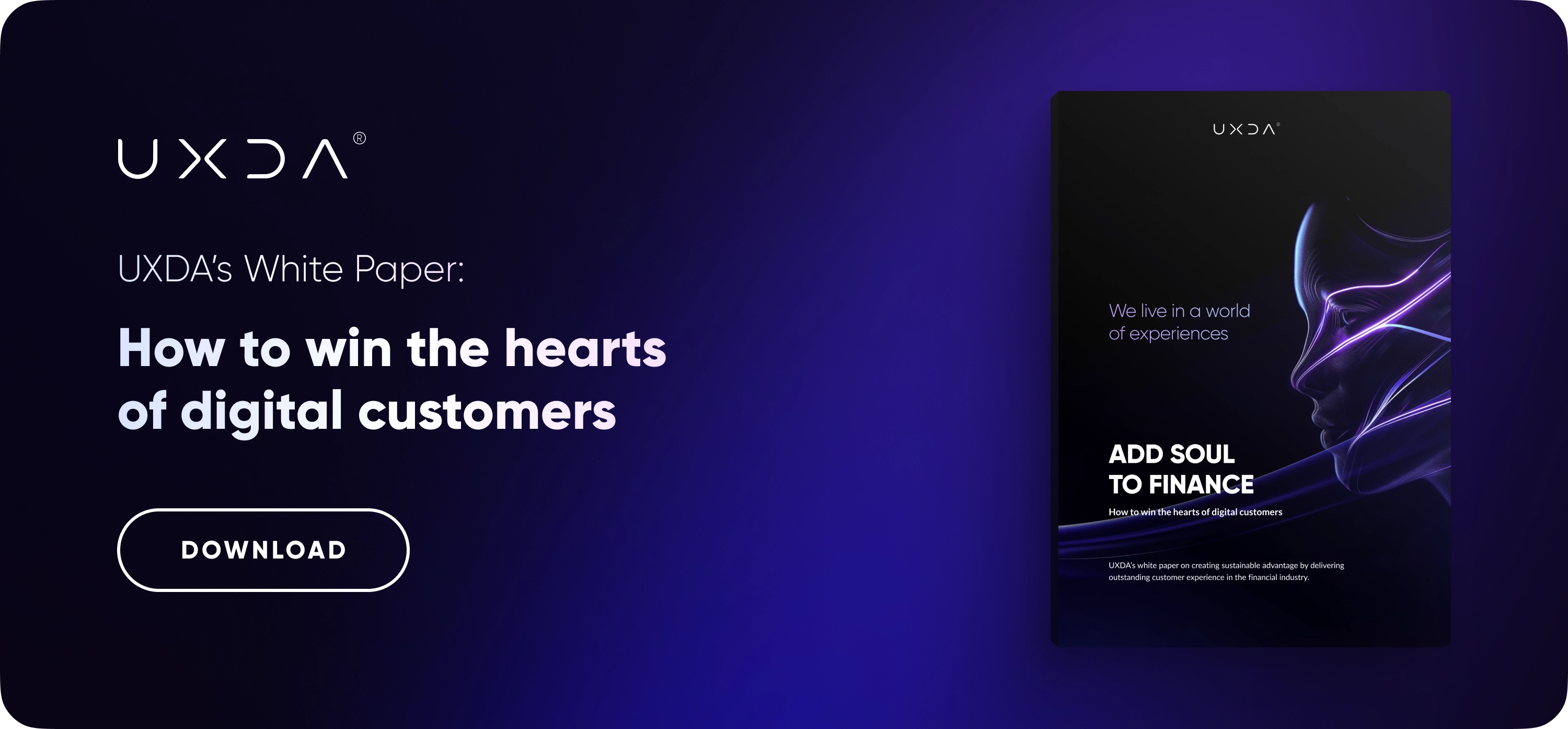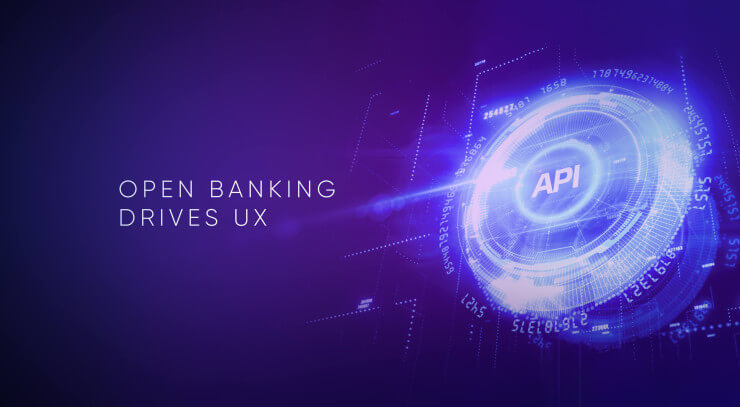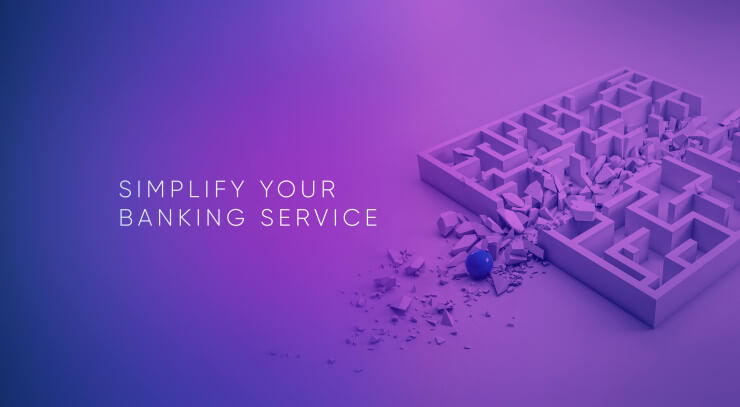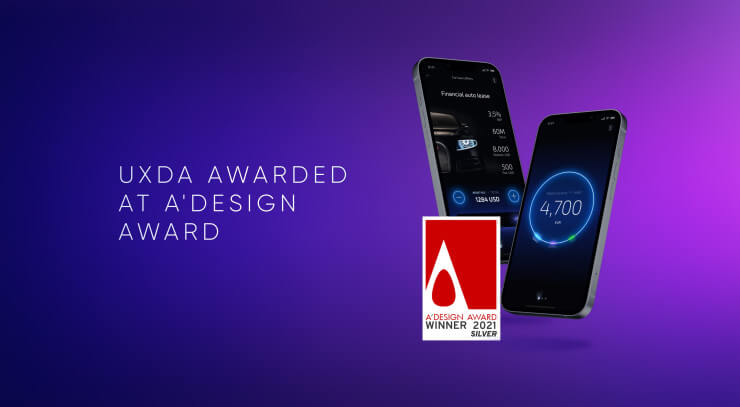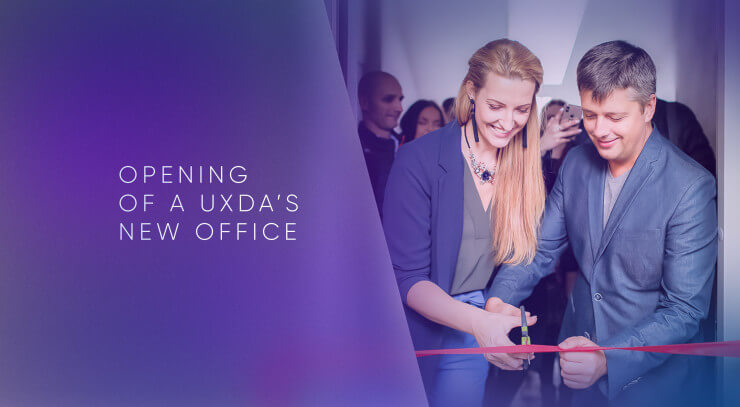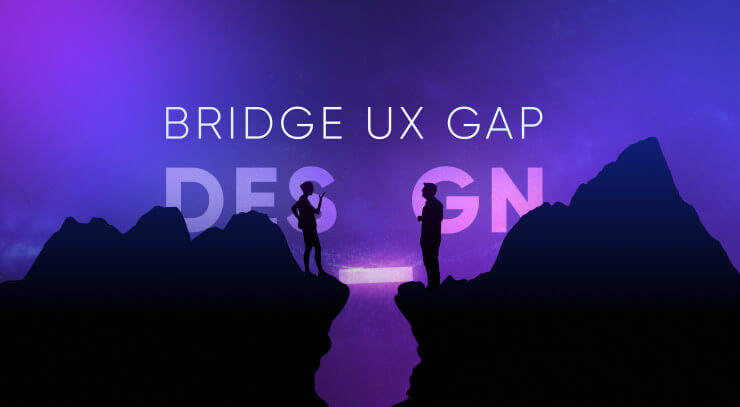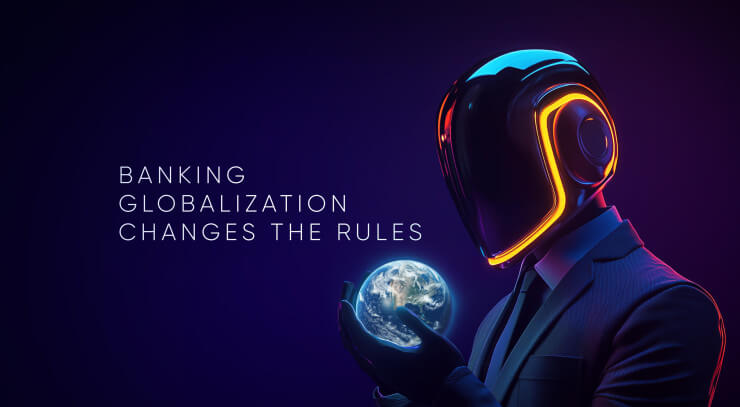In a world where anyone can create a banking, fintech or e-wallet app, digitalization is no longer a differentiator of financial brands. The real challenge now is building a brand's digital experience that goes beyond basic functionality—an experience that bridges the financial brand with customers’ values, emotions and long-term aspirations. Ultimate digital banking trends go far beyond just being digital by packing best online banking features 2025 into revolutionary user experience.
The landscape of digital banking is no longer confined to passively holding deposits and processing routine transactions. In an era in which customers demand authentic relationships, meaningful guidance and deeper purpose, traditional financial institutions risk irrelevance if they continue clinging to outdated models.
The future demands more—more personalization, more empathy, more transparency and more value-driven leadership. Gone are the days when a well-placed branch or even a functional mobile app could differentiate a bank. Although companies continue to compete on essentials like accessibility and security, the true battleground has shifted to forging genuine, lasting connections and offering something beyond the ordinary.
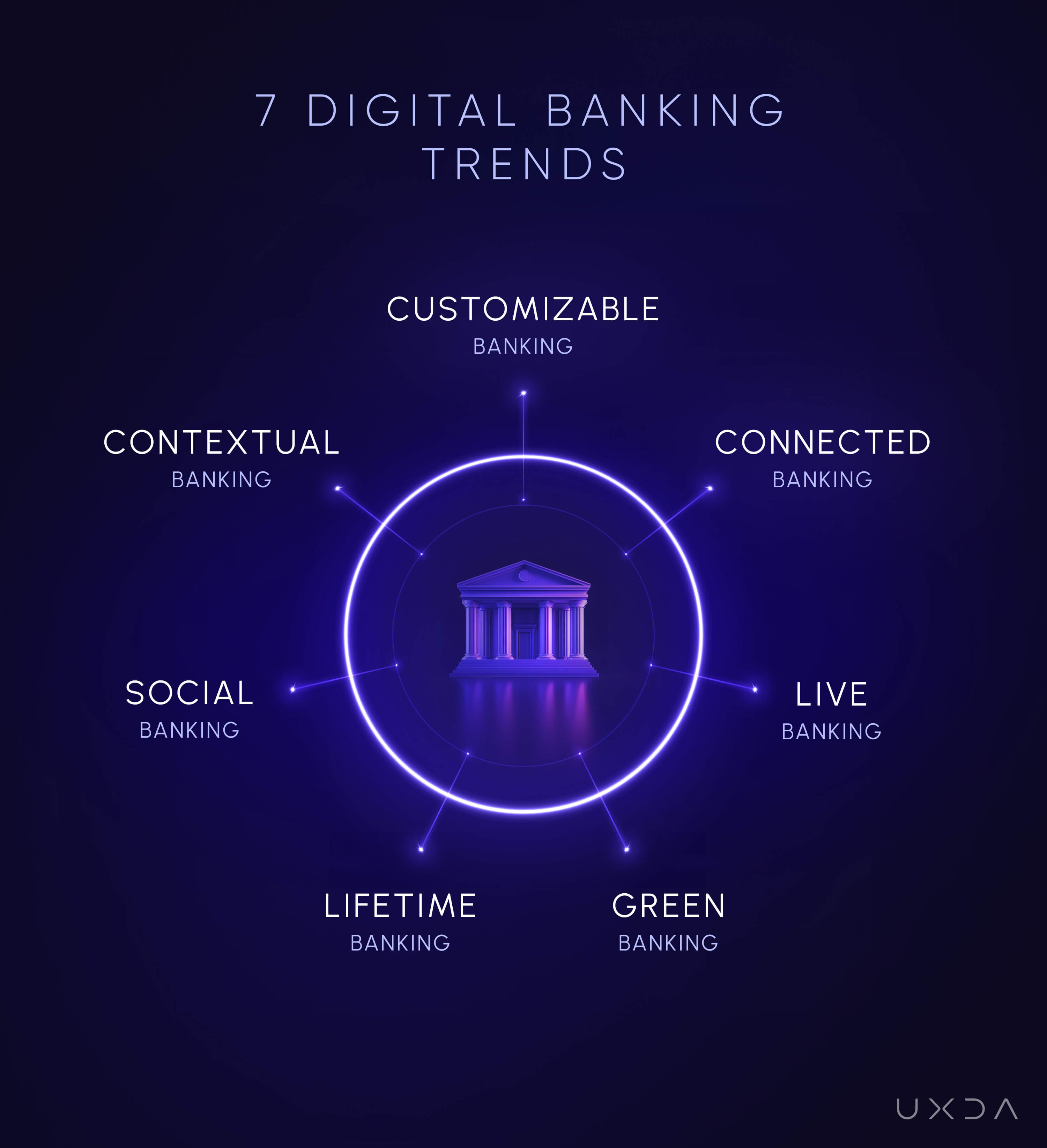
The following seven ultimate digital banking trends 2025—Customizable Banking, Connected Banking, Live Banking, Contextual Banking, Green Banking, Social Banking and Lifetime Banking—are not just innovative customer experience trends in banking, but strategic imperatives. Each emerges from shifting customer expectations, competitive landscapes and rapid technological evolutions.
Why not AI Banking?
While many point to AI as the primary “megatrend” reshaping the financial sector, the reality is that AI is less of a standalone trend and more of an invisible engine powering all of the critical transformations in digital banking. AI-driven analytics, personalization and automation serve as the underlying technology enabling each trend that we explore in this article.
By providing the intelligence that refines customer interactions, notifications and advisories; optimizes service delivery; and even supports ESG-driven banking, AI catalyzes every dimension of banking innovation. Rather than existing as a separate phenomenon, AI’s presence ensures that current banking trends in 2025 achieve the adaptability, responsiveness and meaningful impact that customers increasingly demand.
Next-gen ultimate banking trends challenge the status quo, requiring financial brands to step forward as true lifestyle partners, empathetic advisors and community builders. By embracing these financial services trends, banks can elevate their brand from a background utility to a meaningful presence that customers trust, admire and recommend.
The time for incremental tweaks is over. It’s time to be bold, to provoke change from within and to embrace a future that rewards innovative thinking and courageous action.
1. Customizable Banking
Empowering Brand Personalization
Customizable Banking signals a radical departure from off-the-shelf white-label interfaces and rigid product bundles. Instead, it gives customers the power to remix and reconfigure their entire banking environment. Customizable Banking directly challenges the antiquated notion that one-size-fits-all solutions are acceptable. Banks that will not allow this level of customization face the risk of pushing away customers who will expect digital experiences to be as precisely tailored as their social media feeds.
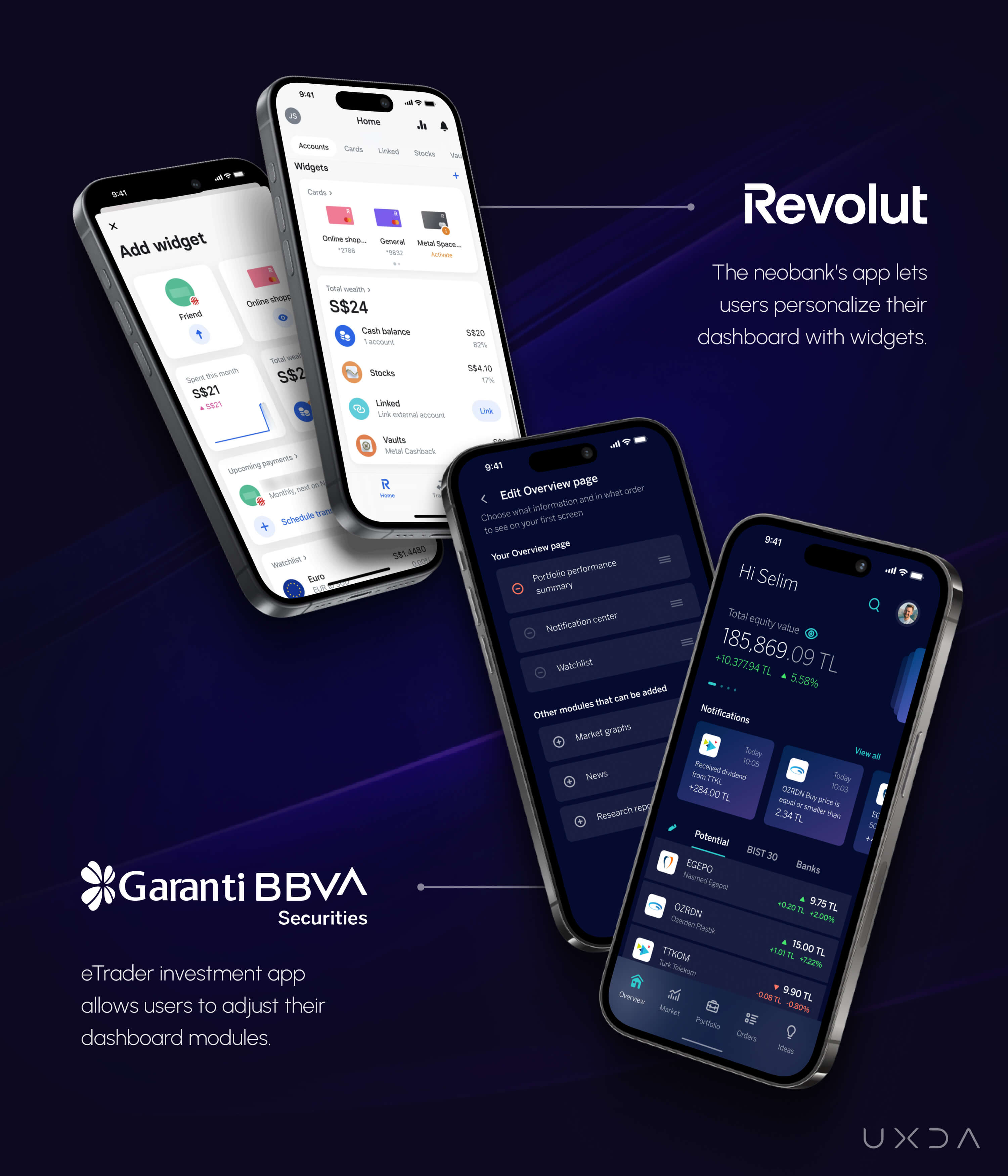
Garanti BBVA Securities UX case study
Customizable Banking invites customers to build their own bespoke financial experiences. This shift turns financial brands into an open canvas—a dynamic ecosystem in which users shape their own experiences. Each widget they add, remove or rearrange becomes a brushstroke in their personal brand journey. Rather than enduring a cookie-cutter set of tools, users pick and choose features and layouts that reflect their personal needs, goals and lifestyles.
Instead of limiting financial services to native features, a Customizable Banking super-app approach unites multiple in-house and third-party services through open APIs. This wide-ranging marketplace of tools—from budgeting and investment platforms to insurance products and tax solutions—lets customers easily select, combine and configure components based on their unique needs. The result is a fluid, dynamic environment that evolves as user preferences and financial complexity grow over time.
Behind the Customizable Banking Trend
Modern consumers increasingly demand control and uniqueness in their digital lives. They are tired of platforms that waste screen space on irrelevant features and yearn for experiences that feel made just for them.
- Millennials and Gen Z are accustomed to customizing everything—from playlists to home screens. This mix-and-match mindset now extends to financial tools.
- Challenger banks and Fintech startups have shown that niche, modular offerings win customers who crave specialized tools. Established banks must keep pace or risk appearing rigid.
- APIs, microservices and widget-based frameworks enable financial brands to offer plug-and-play components that users can rearrange at will.
Impact on Your Financial Brand
When customers actively customize their financial toolkit, they feel invested in your brand, seeing it as a platform that reflects their individuality. Such personalization creates emotional affinity and a narrative of self-expression. By enabling customers to define their own experience, your financial brand moves from mass-market sameness to a uniquely co-created brand identity, reinforcing that you respect and celebrate each customer’s personal story.
By harnessing a Customizable Bank super-app approach, banks give customers the freedom to mix and match modules that perfectly align with their lives and goals. This reduces frustration and fosters a sense of ownership, as users curate services that resonate with their financial journeys. Over time, customers experience a dynamic, evolving platform that deepens engagement, extends retention and nurtures higher satisfaction and trust in their banking relationship.
Instead of dealing with clunky interfaces and irrelevant features, customers pick and choose only the components they need. This flexibility reduces friction, encourages frequent engagement and creates a sense of personal ownership that establishes long-term loyalty.
Use Case Examples
- Customizable Interfaces: A new graduate might opt for simple modules focused on expense tracking and basic savings, while a small business owner might integrate accounting software, payroll services and specialized analytic tools directly within their banking dashboard.
- Ecosystem Expansion: With open APIs, customers can seamlessly add niche third-party providers, such as ethical investment advisors or real-time crypto trading platforms, expanding their financial management capabilities without leaving the bank’s ecosystem.
- Adaptive Complexity: As customers’ financial literacy and ambitions evolve, they can easily incorporate more advanced features—like advanced tax planning or AI-driven portfolio optimization—into their personalized setup.
2. Connected Banking
Truly Seamless Experiences
Why force customers to juggle passwords, repeat their stories and navigate clunky silos? Banks that remain stuck in patchwork approaches are signaling that they value their own operational comfort over their customers’ time and sanity.
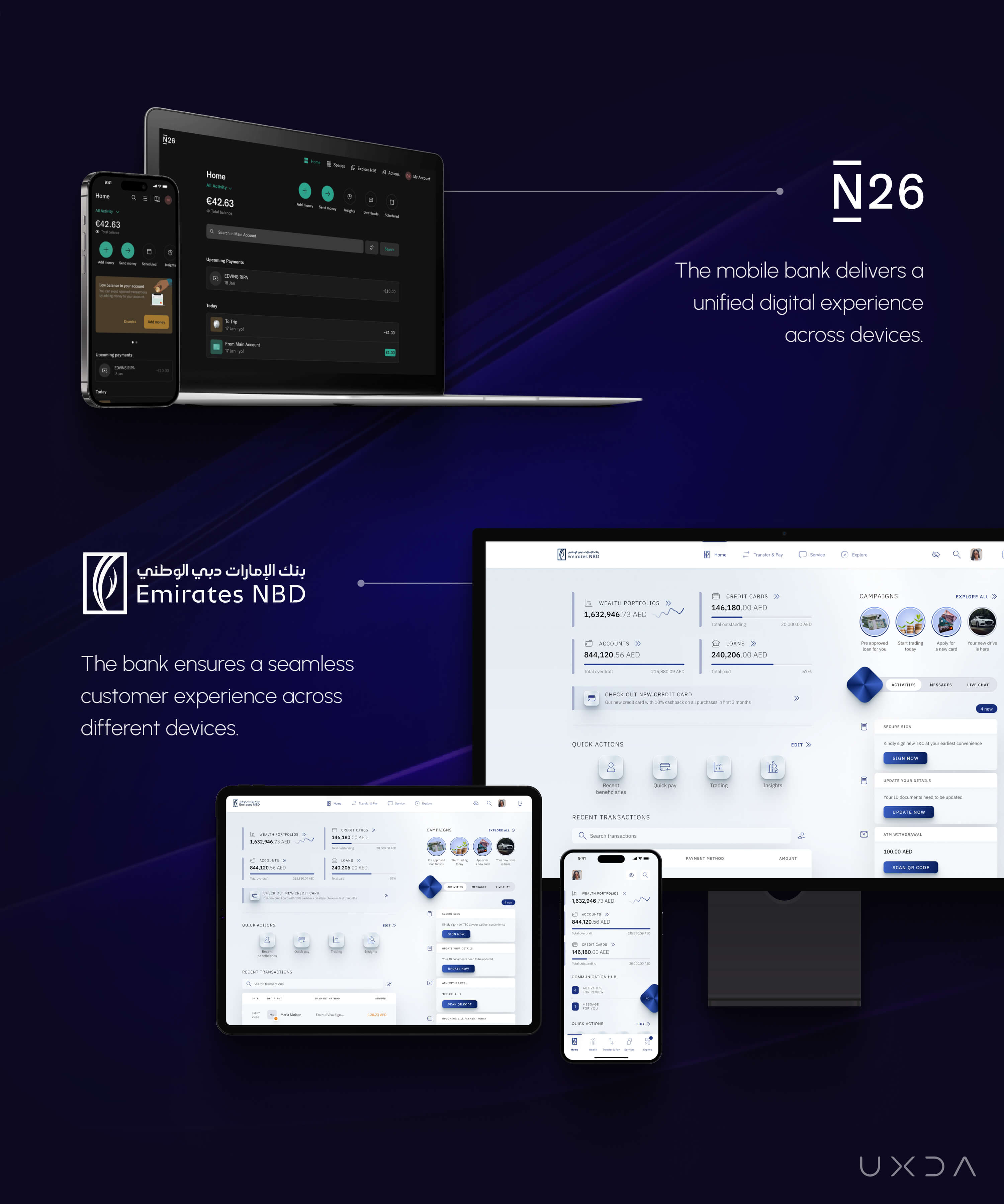
Connected Banking ensures that customers’ banking journeys are consistent and fluid across channels—mobile apps, desktops, voice assistants, wearables and even partner ecosystems. Instead of logging in repeatedly or restarting conversations, customers glide seamlessly, enjoying a coherent brand personality everywhere.
Think of it as giving your brand a single, coherent voice that customers hear everywhere they go. Instead of fragmented touchpoints speaking in dissonant tones, your unified brand presence stays consistent and comforting across the entire digital landscape.
Banks leverage cryptographic credentials, biometric security and encrypted data-sharing networks to ensure safety and transparency. An integrated super-app might unify multiple banking functionalities and even third-party services, enabling customers to manage finances, access advice and complete transactions anywhere, anytime.
Behind the Connected Banking Trend
Today’s digital natives expect brand interactions to feel continuous, like a well-orchestrated narrative. A good example is Apple's interconnected ecosystem, which extends the customer experience beyond interactions with separate products. Fractured experiences undermine trust and brand perception.
- Consumers now multitask across devices and platforms. They expect their financial brand to remember their preferences and context, just like streaming services remember their watch lists.
- Big tech players and super-apps have raised the bar by unifying shopping, communication and entertainment in single ecosystems—customers demand banks to respond in kind.
- Advances in biometrics, cryptographic authentication and secure data-sharing protocols allow seamless identity verification, making cross-channel consistency not just possible but secure and friction-free.
Impact on Your Financial Brand
When your brand presence feels continuous—regardless of the channel—it symbolizes reliability, thoughtfulness and technical sophistication. Customers no longer struggle with clumsy logins or repetitive requests; instead, they feel guided by a singular brand personality that remembers them. This cements a perception of your brand as an orchestral conductor, elegantly harmonizing every encounter into a smooth, signature experience.
Customers float effortlessly among channels and interfaces without repetitive steps. The unified view of personal information reduces friction and cognitive load, leaving customers feeling known, understood and secure. This consistency builds trust, streamlines decision-making and underscores the bank’s commitment to a cohesive, user-centric relationship.
Connected Banking’s synchronized data and secure biometric authentication reduce wait times and cognitive load. The result is a consistent user-centric experience.
Use Case Examples
- Omni-Channel Consistency: A customer begins a loan application on a smartphone app, continues it on a website and finalizes details via a voice assistant—all without the need to re-enter personal information.
- Contextual Handoff: A banking consultant can pick up a conversation exactly where an AI advisor left off, ensuring continuity and no repeated queries.
- Embedded Banking: Banks partner with retailers, wellness apps or ride-sharing platforms so that customers can pay, save or invest seamlessly within other everyday digital services.
3. Live Banking
Humanizing Financial Brands
By insisting that human empathy should remain central, Live Banking stands for technology that enhances humanity without replacing it. It merges the algorithmic sharpness of AI with empathetic human counsel, adding a warm, human heartbeat to digital interactions.
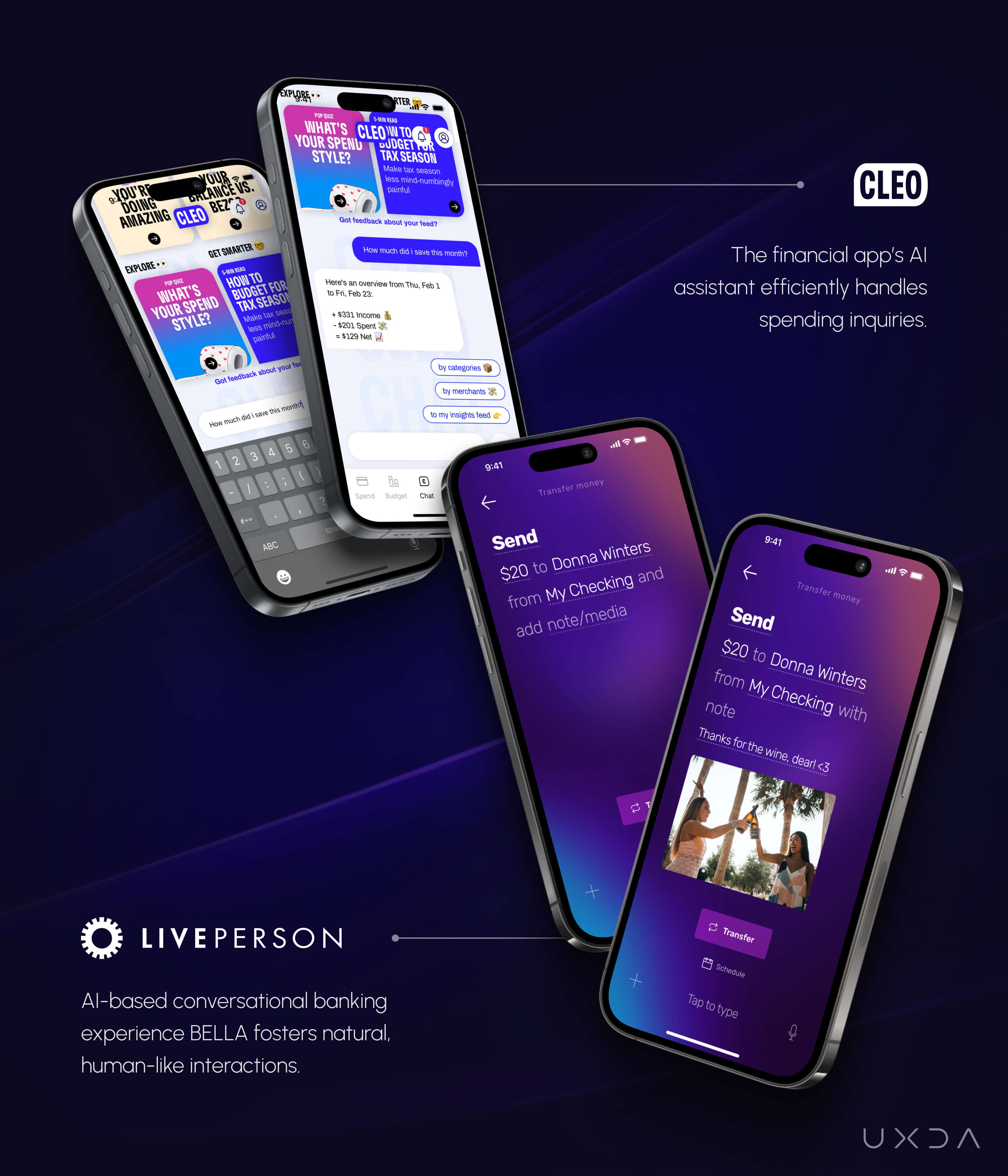
Live Banking fuses AI-driven responsiveness with empathetic human insights to make digital banking feel alive and attentive. It’s a conversation, not a transaction. Customers can quickly resolve routine issues with AI or seamlessly escalate to human advisors who understand their emotional and financial contexts.
Conversations flow naturally, powered by advanced natural language processing and proactive AI diagnostics. Customers can receive on-demand consultations or periodic financial check-ups aligned with their context and lifestyle.
Instead of a static, mechanical presence, your brand could create a digital persona that will feel alive, responsive and genuinely caring—like a knowledgeable friend who can read the room, not just a chatbot churning out scripted lines.
Behind the Live Banking Trend
As digital ecosystems expand, customers yearn for human warmth and understanding. Function-driven automation can feel soulless. Blending technology with the human touch should meet emotional needs, build trust and enhance perceived brand humanity through customer-centered experience.
- Digital banking is no longer a novelty. It’s the norm. Now customers want deeper guidance, reassurance and empathy, especially for complex financial services.
- Competition is no longer just about low fees or fancy features. Institutions gain an edge by offering humanized, emotionally intelligent services that will stand out in a sea of bots.
- Natural language processing, sentiment analysis and video chat integrations make it easier to deploy “humane” AI assistants and smooth human-to-bot transitions.
Impact on Your Financial Brand
By weaving emotion-driven experience into digital channels, your brand transcends the cold, transactional perception often associated with financial services. Customers feel heard, valued and respected, so they can enjoy the service. This emotional resonance creates a halo effect that elevates brand perception, making your institution feel like a caring advisor rather than a faceless vendor. In a market full of sterile interfaces, a humanized digital brand will stand out as both dependable and soulfully engaged.
As digital interactions become more personal and responsive, customers feel genuinely cared for. The immediacy and warmth of human-like engagement reduces stress and confusion, while timely guidance encourages healthy financial behaviors. This supportive, humanized layer builds lasting trust, making customers feel comfortable and confident in their banking relationship.
Use Case Examples
- Conversational Query Resolution: An AI assistant rapidly handles balance inquiries, transaction categorization or simple troubleshooting, escalating to a human advisor for more complex and nuanced financial advice.
- Periodic Financial Health Reviews: Scheduled sessions—like a virtual financial wellness check—help customers understand their credit score, investment performance and savings plans.
- Adaptive Support: If AI detects emotional distress or confusion, it seamlessly brings in a human advisor who reassures, clarifies complex products or helps navigate major decisions.
4. Contextual Banking
Tailored Advice, Perfect Timing
Banks that fail to personalize their services risk becoming that annoying acquaintance who never listens and keeps pushing irrelevant solutions. By refusing to read the room, they admit they care more about pushing products than enhancing lives.
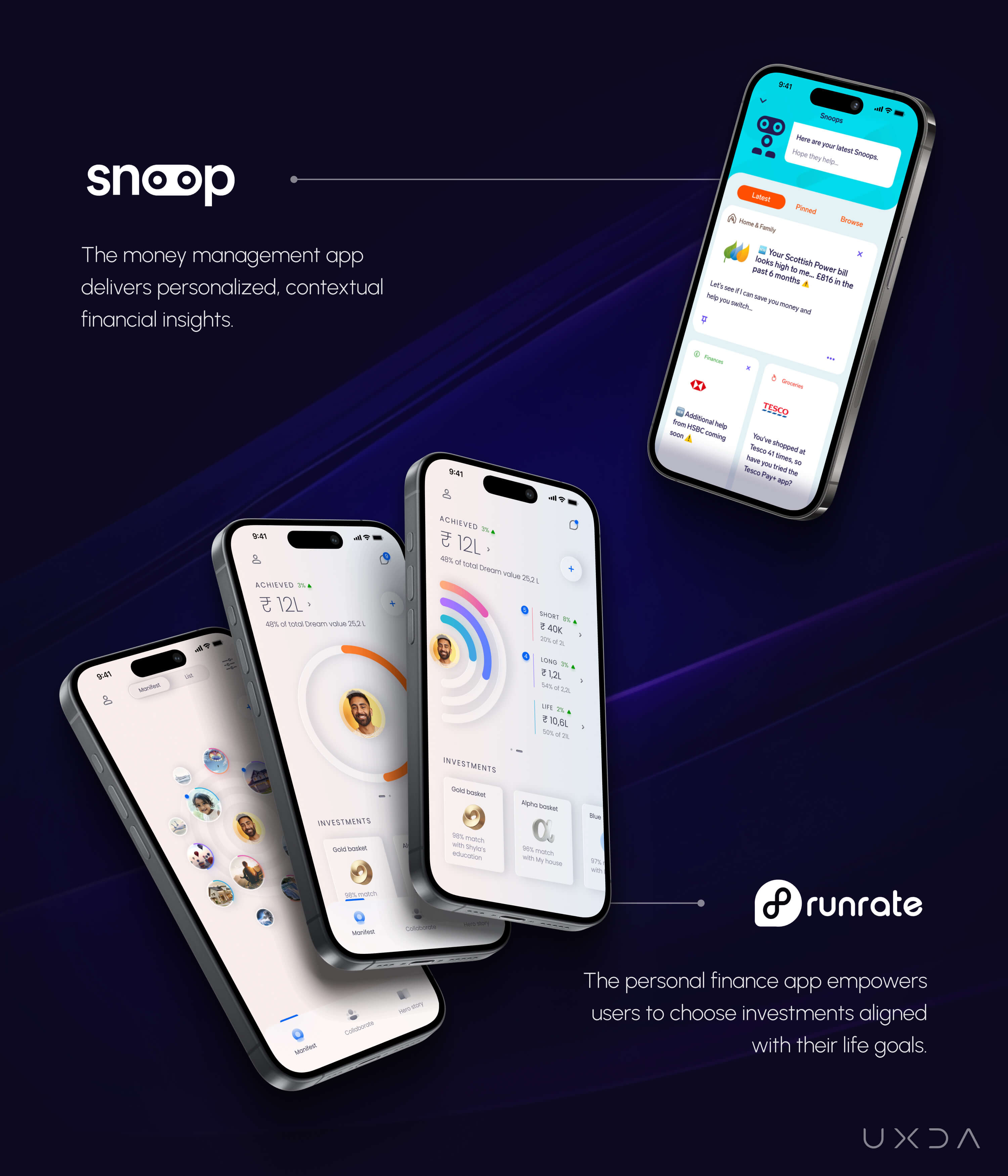
Contextual Banking uses behavioral data, life events and user-defined preferences to offer well-timed, genuinely helpful guidance. Instead of blanketing customers with random product pitches and pushing impersonal promotions, a financial brand’s messaging arrives as a thoughtful recommendation at the right moment—aligning perfectly with a customer’s situations, moods and goals.
Contextual Banking relies on predictive analytics and AI to suggest further steps, offer relevant products or provide timely alerts aligned with each customer’s situation—whether it’s a life milestone, a recent job change or subtle shifts in spending patterns. Your brand no longer pushes generic offers; it “whispers” timely guidance.
Customers control their data and communication styles, allowing them to request proactive alerts or context-sensitive recommendations that complement their emotional and practical needs.
Behind the Contextual Banking Trend
With hyper-personalized recommendations becoming the norm in entertainment, shopping and content, banking must offer the same level of intuitive relevance. Customers now expect brands to understand their context and deliver meaningful suggestions instead of intrusive support.
- Consumers reject one-size-fits-all marketing and gravitate instead toward brands that anticipate their needs and serve them proactively.
- Fintechs use machine learning to analyze user data and behavioral patterns, setting a new standard for “just-in-time” guidance that big banks must match.
- AI-driven recommendation engines, event-triggered communications and integrated data streams make real-time contextualization both feasible and scalable.
Impact on Your Financial Brand
This shift from generic marketing to bespoke, situation-aware assistance firmly positions your brand as a reliable ally. The brand’s voice shifts from a sales pitch to a wise, considerate companion who “gets” its customers. Over time, this relevance fosters deep trust, reinforcing a brand image built on respect and meaningful support, not opportunistic upselling.
Customers experience helpful suggestions instead of annoying and irrelevant selling tactics. The banking platform seamlessly fits into their lives, providing meaningful, respectful support without feeling invasive. By placing customers in control of their communication settings, trust and loyalty grow. Contextual interactions become building blocks of a responsive, value-adding relationship rather than one-dimensional marketing.
Instead of feeling “sold to,” customers feel genuinely assisted. They control when and how they receive suggestions, ensuring that alerts and offers feel like welcome help rather than marketing “noise.”
Use Case Examples
- Life-Event Triggers: Upon sensing that a customer recently started a new job, the bank might suggest a tailored budgeting plan or relevant investment products.
- Geolocation-Based Tips: When a customer travels abroad, the app may highlight local currency exchange options or travel insurance add-ons.
- User-Defined Preferences: A privacy-conscious customer can limit push alerts to monthly summaries, while a more engaged user receives gentle, timely suggestions during everyday transactions.
5. Green Banking
Aligning Finance with Values
In an era of climate crisis and social upheaval, banks that ignore sustainability signal that they’re stuck in a moral vacuum. This alienation not only loses customers but erodes credibility.
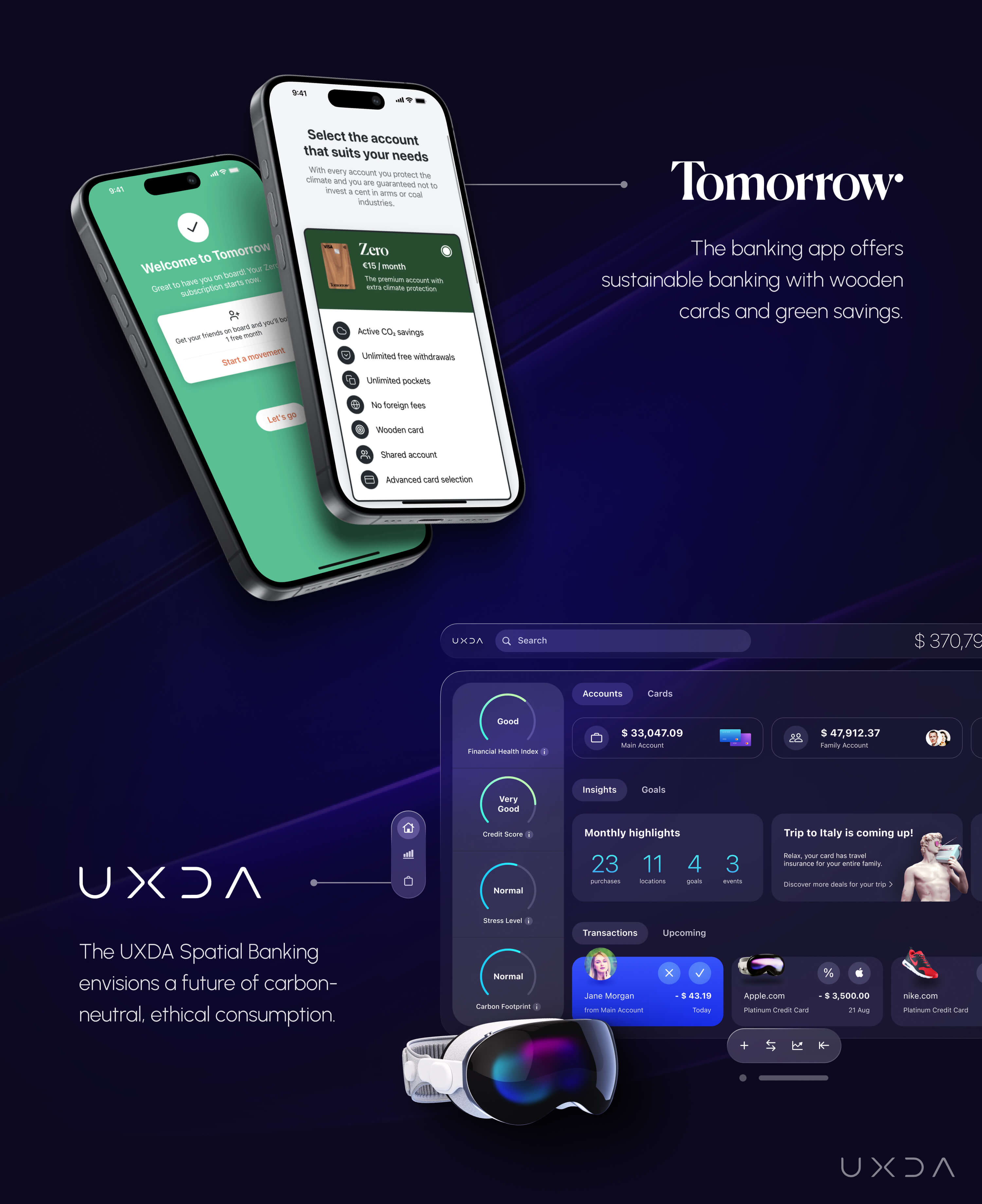
Green Banking weaves ESG (Environmental, Social, Governance) considerations into everyday financial decisions. Sustainable products, transparent investment screenings and carbon accountability empower customers to align their finances with personal values. Your brand stands out as a beacon of purposeful, responsible leadership with a statement that profit isn’t the only bottom line you care about.
Green Banking integrates ethical and environmental values into the customer experience. From subtle nudges toward sustainable investment portfolios to transparent ESG frameworks guiding credit products, banks help customers align their financial decisions with personal ethics. Responsible product design, carbon-neutral initiatives and sustainability scorecards empower customers to measure the impact of their financial choices.
Behind the Green Banking Trend
As climate change and social justice issues top public discourse, people increasingly align spending and investing with their beliefs. They don’t just want a bank—they want a brand that supports their worldview.
- Shoppers check ethical sourcing. Investors watch ESG ratings. Ethical considerations now drive buying and investment decisions, including banking choices.
- Sustainability-linked loans, green bonds and ESG funds are reshaping financial portfolios, and brands that don’t adapt will appear to be out of touch.
- Blockchain-enabled traceability, robust reporting tools and AI-driven ESG analytics allow transparent measurement of environmental and social impact, making sustainability credible and measurable.
Impact on Your Financial Brand
Aligning with social and environmental values transforms your brand into a purpose-driven beacon. In a climate-aware era, this moral stance can become a key differentiator, attracting socially conscious customers who want their finances to reflect their values. Emphasizing sustainability is more than a marketing move; it’s a deeper promise that your brand is part of a better future—reinforcing loyalty, admiration and lasting brand love.
When banking aligns with personal values, the financial relationship transcends pure utility. Customers feel pride in their choices and see their bank as a champion of positive change. This value-centric alignment enhances emotional bonds, differentiates the brand and resonates deeply with socially conscious segments, driving loyalty and advocacy.
Use Case Examples
- ESG Investment Filters: Customers can explore funds that align with their social and environmental priorities, using transparent ESG ratings.
- Sustainable Lending: Banks encourage mortgages that support eco-friendly homes, offering favorable rates for energy-efficient improvements.
- Green Rewards: Customers earn eco-points or receive insights into the positive impact of their financial behaviors, such as reduced carbon footprints through digital statements.
6. Social Banking
Turning Customers into Communities
By daring to hand some control back to customers, Social Banking confronts the long-held belief that banks must stand aloof. Instead, it embraces vulnerability and acknowledges that fellow customers, not bankers, hold many of the answers.
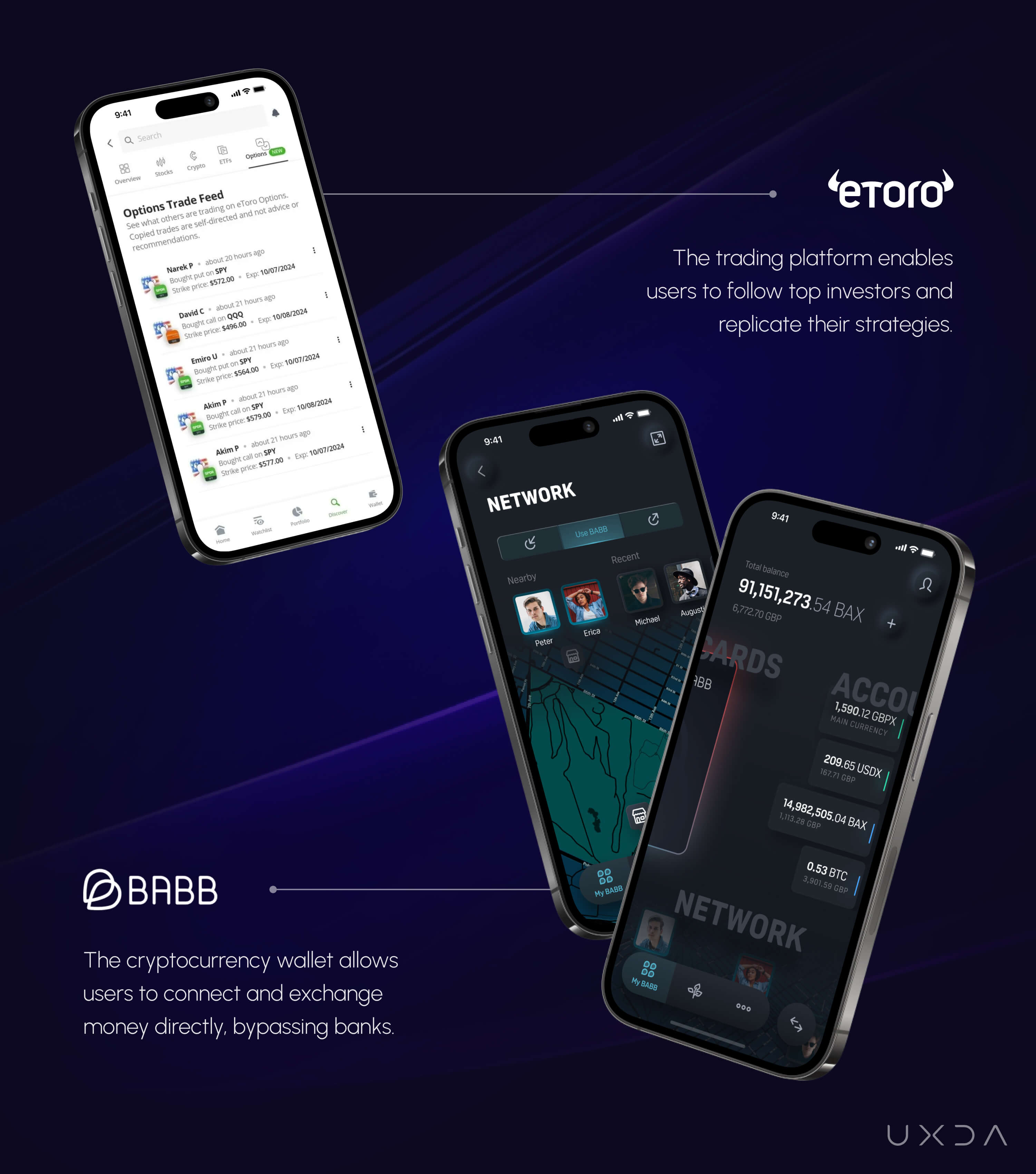
Social Banking transforms your financial brand from a solitary service provider into a community hub. Customers can learn from one other, share financial best practices and even co-develop new product features. Banks host forums, facilitate peer-to-peer knowledge exchanges and spotlight customer success stories. Crowdsourced feedback helps shape new functionalities, while mentorship circles connect seasoned savers with novice investors.
Behind the Social Banking Trend
In the age of social media and creator communities, customers are no longer passive consumers. They want a seat at the table, helping build products and experiences that benefit not only themselves, but everyone.
- Online communities and peer-to-peer advice platforms thrive in every sector. Customers increasingly trust user-generated content and peer recommendations.
- Crowdsourcing product feedback and involving customers in decision-making have become hallmarks of modern, transparent brands.
- Integrated community platforms, social features baked into apps and data analytics that identify community leaders and influencers make it easy to nurture a thriving financial ecosystem.
Impact on Your Financial Brand
When customers interact, advise one another and contribute feedback in brand-hosted environments, your brand becomes a community catalyst. This organic exchange of knowledge and support casts your brand as open, inclusive and forward-thinking. Customers aren’t just users—they’re valued voices shaping the brand’s future. As trust and camaraderie grow, your brand moves beyond transactional territory to become a social anchor point that customers feel proud to affiliate with.
By empowering customers to help each other and contribute ideas, banking relationships become dialogues instead of monologues. This collaborative environment builds trust, reduces isolation and provides practical, real-world insights. Customers feel valued and recognized, fostering long-term loyalty and community-driven brand affinity.
Use Case Examples
- Community Discussion Groups: Young professionals share budgeting hacks, while retirees discuss wealth preservation strategies, all moderated and supported by the bank.
- Insights About Similar Users: Banks can share common data for similar users to allow people and businesses to compare their financial situation with others. For example, save 50% more, following people in similar geographic, family and financial situations.
- Peer-to-Peer Learning Modules: Gamified learning experiences allow customers to teach each other, earning badges and recognition for their contributions.
7. Lifetime Banking
Guidance for Every Life Stage
In a world that worships quarterly earnings, investing in a customer’s lifetime well-being is a radical act. Banks that refuse this holistic perspective remain trapped in a transactional mindset, blind to the deep loyalty that long-term care can generate.
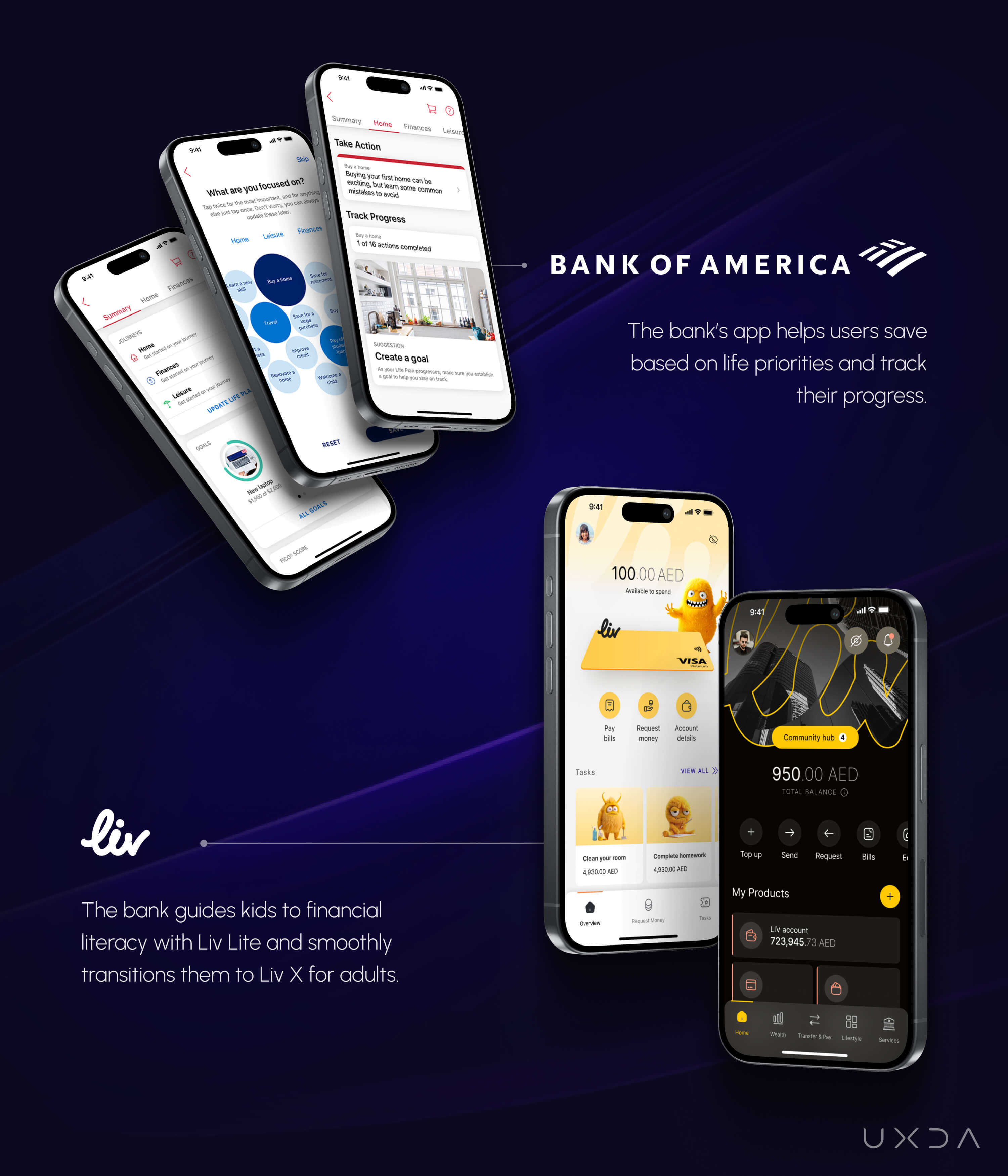
Lifetime Banking replaces short-term, transactional thinking with long-term, holistic guidance. It focuses on guiding customers through all life milestones—new careers, home purchases, children’s education, retirement planning—always anticipating needs and offering transparent, ethical advice.
Advanced AI engines understand customers’ evolving goals. Customers receive ongoing, proactive advice tailored to life’s changing chapters, ensuring smooth transitions, informed decisions and a comprehensive suite of lifestyle-oriented financial services. Your brand becomes a steady presence that grows and adapts with the customer, cementing long-term loyalty.
Behind the Lifetime Banking Trend
In a world of one-off services and digital fly-by-night operations, a reliable financial partner who is ready to support you throughout your life is especially valuable. Brands that can provide true continuity and foresight in digital services will become indispensable.
- People seek holistic guidance in finance, not just point-in-time transactions. A bank that understands their evolving journey fosters stronger emotional bonds.
- Wealth management, financial planning and robo-advisory tools are migrating from the elite corners of finance to everyday digital banking, democratizing long-term guidance.
- AI-driven life-event prediction, secure data storage and integrated personal finance management systems enable long-horizon planning at scale.
Impact on Your Financial Brand
Positioning your brand as a steady companion throughout life’s journey infuses the relationship with depth and continuity. Customers perceive the brand as a guiding force that genuinely cares about their long-term success. This consistent, forward-looking support builds emotional resilience into the brand relationship, ensuring that your institution remains relevant, trusted and cherished over decades rather than drifting in and out of relevance.
By delivering continuous, context-aware and future-focused guidance supplemented with lifestyle-centric services, banks become more than service providers—they become holistic life partners. Customers appreciate the long-view approach that not only reduces financial complexity but also supports their personal interests, well-being and aspirations.
By maintaining a long-term perspective, banks transcend the transactional and become trusted allies. This deepens emotional loyalty and encourages strong, enduring relationships as customers journey through their financial and personal life stages.
Use Case Examples
- Goal-Based Planning: A 30-year-old customer receives guidance on saving for a home down payment, while a 55-year-old gets advice on optimizing investments for retirement income stability.
- Proactive Life Milestone Alerts: Approaching a major event—like a child’s college admission—the bank suggests savings adjustments, loan options or scholarships to explore.
- Lifestyle Services and Products: Beyond traditional financial offerings, banks curate a range of lifestyle-enhancing solutions. For example, a customer nearing retirement might gain access to preferred travel rewards, tailored insurance packages, partner discounts on home improvements or health and wellness benefits that adapt as their priorities evolve.
Bonus: Invisible Banking
The Ultimate Evolutionary Paradigm
Invisible Banking is not just another trend; it’s the culmination of all the transformative forces reshaping financial services. Imagine a financial world so embedded into daily life that banking scarcely registers as a conscious action.
This paradigm evolves naturally from the convergence of recent trends in the banking industry. As customers grew accustomed to customizing their experiences, enjoying seamless cross-channel interactions, feeling human empathy within digital platforms, receiving perfectly timed contextual nudges, aligning their finances with social and ecological values, co-creating in community-led ecosystems, and relying on long-term guidance from their bank—each of these elements paved the way for something larger and more profound. Invisible Banking emerges as an integrated whole, transforming the bank from a standalone institution into a pervasive, trusted companion invisibly integrated into a customer’s digital and physical ecosystems.
Empowering a Banking Presence You Hardly Notice
The “ideal UX” is the absence of complexity, the absence of mental overhead—and that’s exactly what Invisible Banking promises. By invisibly embedding financial capabilities into non-banking platforms, services appear exactly when needed, with minimal cognitive load. When your financial brand becomes a transparent layer beneath life’s activities, banking stops feeling like a chore and starts feeling like a given.
Invisible Banking thrives on advanced AI, open APIs, cloud infrastructures, distributed ledgers and even Central Bank Digital Currencies—tools that silently execute complex processes behind the scenes. Automation, predictive analytics and machine learning anticipate needs, handle repetitive tasks, and deliver just-in-time insights without users having to request them. As a result, customers spend less time managing finances and more time living their lives.
Behind the Invisible Banking Paradigm
Invisible Banking emerges from a world in which customers have grown impatient with unnecessary friction and complexity. They have tasted the benefits of all preceding financial services trends and now demand that their financial services just “work,” fitting seamlessly into their personal contexts. The building blocks have been set:
- From Customizable to Invisible: After customizing modules and interfaces to their liking, customers move beyond even noticing these components as they integrate into their personal digital ecosystems.
- From Connected to Embedded: What started as consistent multi-channel experiences evolves into banking that’s omnipresent in partner platforms, everyday tools, and even appliances—operating silently and flawlessly.
- From Live to Intuitive: Once human empathy and AI-driven guidance showed customers they could be understood, the next step is proactive foresight. The system “just knows,” offering quiet guidance and support without a prompt.
- From Contextual to Effortless: Timing and relevance evolve into predictive invisibility. Instead of providing contextual nudges, invisible banking takes care of things behind the scenes, reducing interruptions to near zero.
- From Green to Responsible by Default: Aligning finances with values no longer needs explicit selection; invisible platforms automatically route investments, loans, and savings to ethical and sustainable options by design.
- From Social to Ecosystemic: Instead of joining a community hub, customers simply benefit from the collective intelligence of ecosystem partners seamlessly integrated into their daily flows.
- From Lifetime to Ever-Present: The idea of life-long guidance transforms into constant, invisible guardianship of a customer’s financial well-being, adjusting continuously to changing circumstances without deliberate intervention.
Impact on Your Financial Brand
Invisible Banking marks a shift from a service provider to an essential, embedded utility—like electricity or Wi-Fi. This effortless presence nurtures a deep-rooted confidence that financial service is there when needed, without demanding attention. That unspoken reliability, subtle yet profound, can inspire fierce loyalty. Moreover, by removing layers of visible complexity, you create more opportunities to surprise and delight customers with value-add services that feel like intuitive extensions of their lives.
Invisible Banking also sets the bar so high that any slip into visible friction becomes glaring. This means your brand must commit to continuous improvement, ensuring behind-the-scenes operations remain flawless, secure, and always evolving in alignment with customers’ changing needs.
Use Case Examples
For customers, Invisible Banking means embracing “financial autopilot” where routine tasks fade away. No more fussing over manual bill payments, juggling multiple apps, or enduring countless logins. Instead, financial magic becomes everyday life:
- Seamless Automated Flows: Customers receive their paychecks, settle bills, top up savings, and manage investments without even lifting a finger. They simply set rules once and let the system handle the rest.
- Frictionless Ecosystem Integrations: Need travel insurance while booking flights? It’s automatically offered at checkout. Want to round up purchases into a green investment fund? It’s done silently at point-of-sale. Saving for a child’s education? Contributions adjust invisibly as incomes and expenses shift.
- Proactive, Invisible Safeguards: Customers no longer worry about overdrafts, fraudulent charges, or missed opportunities. Intelligent AI algorithms and secure authentication systems work silently to protect their financial interests at all times.
- Continuous, Unobtrusive Guidance: Life changes are recognized automatically. When a user shifts from gig-work to a salaried role, the system recalibrates savings strategies. Home purchases, career changes, health expenses—all get managed fluidly without manual intervention.
- Embedded Payroll and Savings: A freelance professional’s income streams and expenses are automatically balanced. Tax withholdings, rainy-day savings, and short-term investments adjust on the fly, based on previous instructions, preferences and user behaviors.
- Context-Free Credit: When a customer’s car breaks down, financing options for repairs appear as part of the mechanic’s checkout process. Approval is instant and invisible, seamlessly integrated into the transaction.
- Silent Ethical Investments: Customers’ ongoing savings are continuously reallocated towards sustainable and ethical funds. They never have to research or confirm these choices; the bank’s invisible AI engine has already learned their values and priorities, acting accordingly.
- Automatic Financial Life-Planning: Life-stage transitions—marriage, a new job, retirement—trigger behind-the-scenes adjustments to budgets, investment allocations, and insurance coverages. Customers remain focused on their life events, not their spreadsheets.
From Commodity to Companion: A Brand-Led Banking Transformation
Competition among financial brands has shifted from a fight over locations, fees, relations and service range to a fight over meanings, identities, customer experience and innovations.
As the conventional, transaction-focused mindset of many financial institutions begins to feel increasingly out of touch with evolving customer priorities, a new paradigm beckons. By the end of this decade, digital banking could shift from being a passive, commoditized backdrop to becoming a deeply integrated, empowering presence in our daily lives.
These seven ultimate digital banking trends 2025 challenge financial brands to rethink their roles, leaving behind a narrow focus on products or transactional convenience. Instead, they help usher in a new era defined by shared values, flexible personalization, genuine community and lifelong guidance. Each trend underscores a reality: customers no longer accept banks as mere utilities—they demand meaningful, relevant and human-centric brand experiences.
3 Key Takeaways:
- Experience Over Transactions: Digital banking must transcend routine tasks. Tomorrow’s strongest brands are those that build ecosystems of trust, utility and personal meaning.
- Purpose as a Differentiator: Customers want partners that share their values. Sustainability, social engagement and long-term guidance become key brand signals that attract and retain loyalty.
- Co-Creation and Community: Empowering customers to shape their own experiences, engage with each other and provide input on product evolution fosters belonging and authenticity—qualities that set brands apart from the competition.
By embracing these changes, advanced financial brands will transition from an interchangeable commodity to a trusted companion. Instead of clinging to outdated notions of success measured only by shareholder returns and product breadth, the industry can use digital technologies and AI to cultivate genuine partnerships that interpret personal contexts, align with shared values and build resilient communities.
Next-generation banking is no longer about offering mere conveniences—it’s about designing human-centered experiences that resonate emotionally and even influence customers’ behaviors at a neurological level. Think of it as Dopamine Banking, where the goal is to release positive emotional energy rather than just process financial transactions. By tapping into customers’ values, life aspirations, and personal identities, banks move beyond the dull necessities of saving, spending and investing.
This shift relies on delivering moments of delight, trust, and empowerment—events that trigger emotional reinforcement as customers interact with their finances. Customizable modules, empathetic guidance, community-driven insights, ethically aligned investments and long-term mentorship all merge into a rich ecosystem of meaningful engagement. AI becomes the unseen conductor of these experiences—fine-tuning timing, tone, and relevance so that banking ceases to be a chore and emerges as a seamless extension of the customer’s lifestyle.
5 To-Do Actions for Banks and Financial Brands:
- Audit Your Channels: Map every touchpoint—apps, web, voice, wearables—and ensure they convey a unified brand personality. Aim for seamless transitions and consistent messaging.
- Introduce Customizable Interfaces: Implement customizable dashboards and financial “recipes” that let customers tailor their banking environment, reinforcing personal ownership and brand relevance.
- Humanize Digital Interactions: Add empathetic, human-in-the-loop support for complex queries. Blend AI’s efficiency with genuine advisor empathy to raise trust and emotional connection.
- Contextualize and Personalize: Leverage customer data responsibly to deliver timely, relevant advice—offering help when it’s wanted, not just pushing products. Involve customers in setting their own communication preferences.
- Embed Values and Community: Incorporate sustainability metrics, host forums, invite community feedback and demonstrate ethical leadership. Make your brand a platform customers feel proud to align with over the long term.
So, is there still room for unique financial brands in a digital world dominated by standardization and commoditization? As we see, recent financial services trends 2025 say yes—unique experience isn’t just possible; it’s exactly what customers now demand.
Rather than viewing a banking app as merely a digital ledger, Dopamine Banking treats it as a platform for personal growth, entertainment, and social connection. The idea is to produce a “wow” factor: interactions with the bank’s digital ecosystem should feel intuitive, satisfying, and even inspiring, encouraging users to return regularly and engage more deeply.
The “dopamine” in Dopamine Banking references one of the brain’s primary neurotransmitters associated with motivation, learning, and reward. When we encounter something positive—such as receiving a personalized tip that helps us save money, or seeing an aesthetically pleasing, interactive dashboard that tracks our financial health—we get a small boost of dopamine. Over time, these positive micro-experiences can help transform the traditional banking relationship into a long-term, trust-based partnership that feels more like navigating a personalized financial companion than dealing with a faceless institution.
As old models of differentiation erode, forward-thinking financial institutions are finding new ways to stand apart: cultivating richer relationships, embedding genuine empathy and guidance and seamlessly integrating advanced capabilities into everyday life. Against a backdrop where technology has leveled the playing field, financial brands that focus on meaning, trust and value-driven innovation have the power to transcend just digital and truly stand out as indispensable partners in their customers’ financial journeys.
Get UXDA Research-Based White Paper "How to Win the Hearts of Digital Customers":
If you want to create next-gen financial products to receive an exceptional competitive advantage in the digital age, contact us! With the power of financial UX design, we can help you turn your business into a beloved financial brand with a strong emotional connection with your clients, resulting in success, demand, and long-term customer loyalty.
- E-mail us at info@theuxda.com
- Chat with us in Whatsapp
- Send a direct message to UXDA's CEO Alex Kreger on Linkedin






